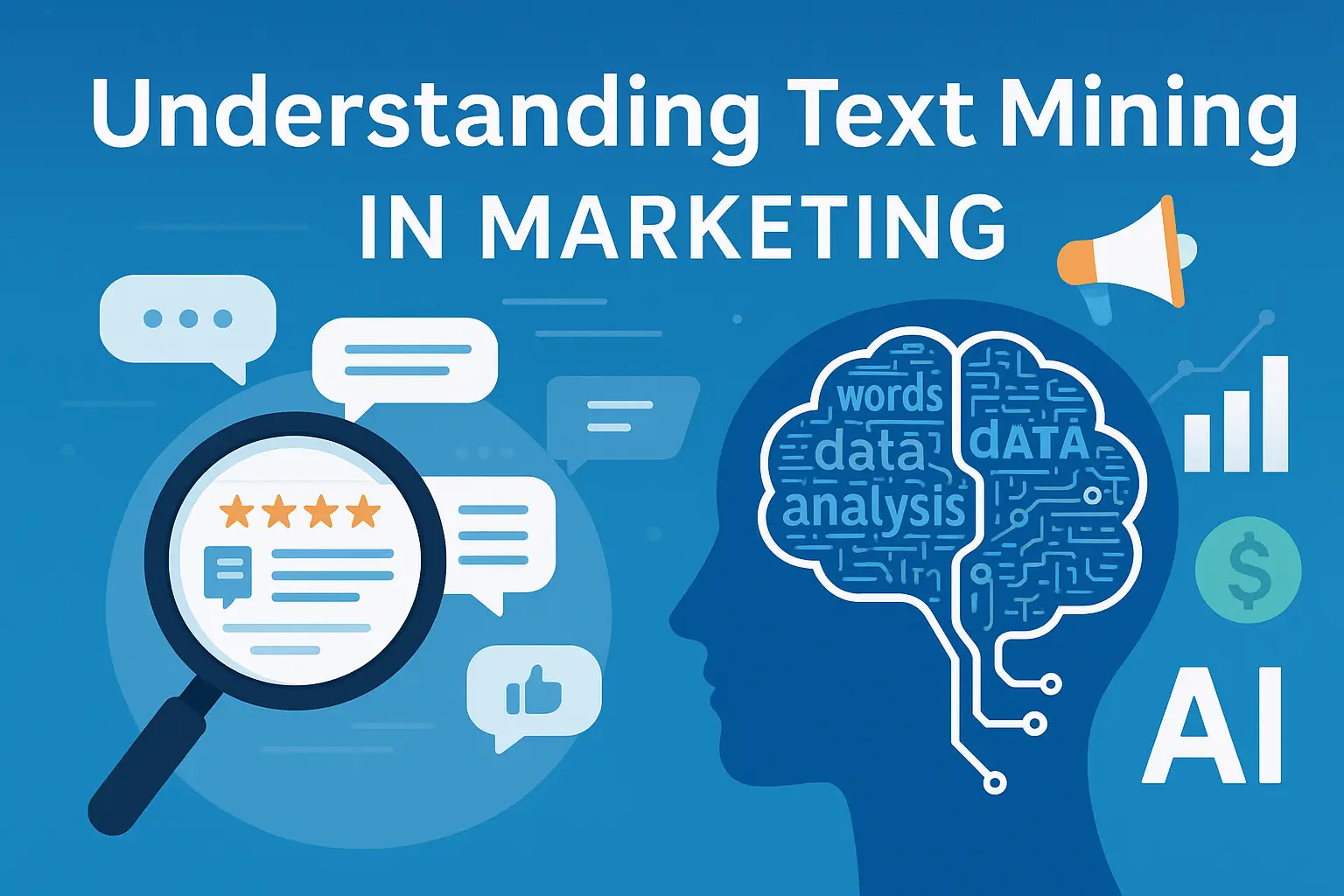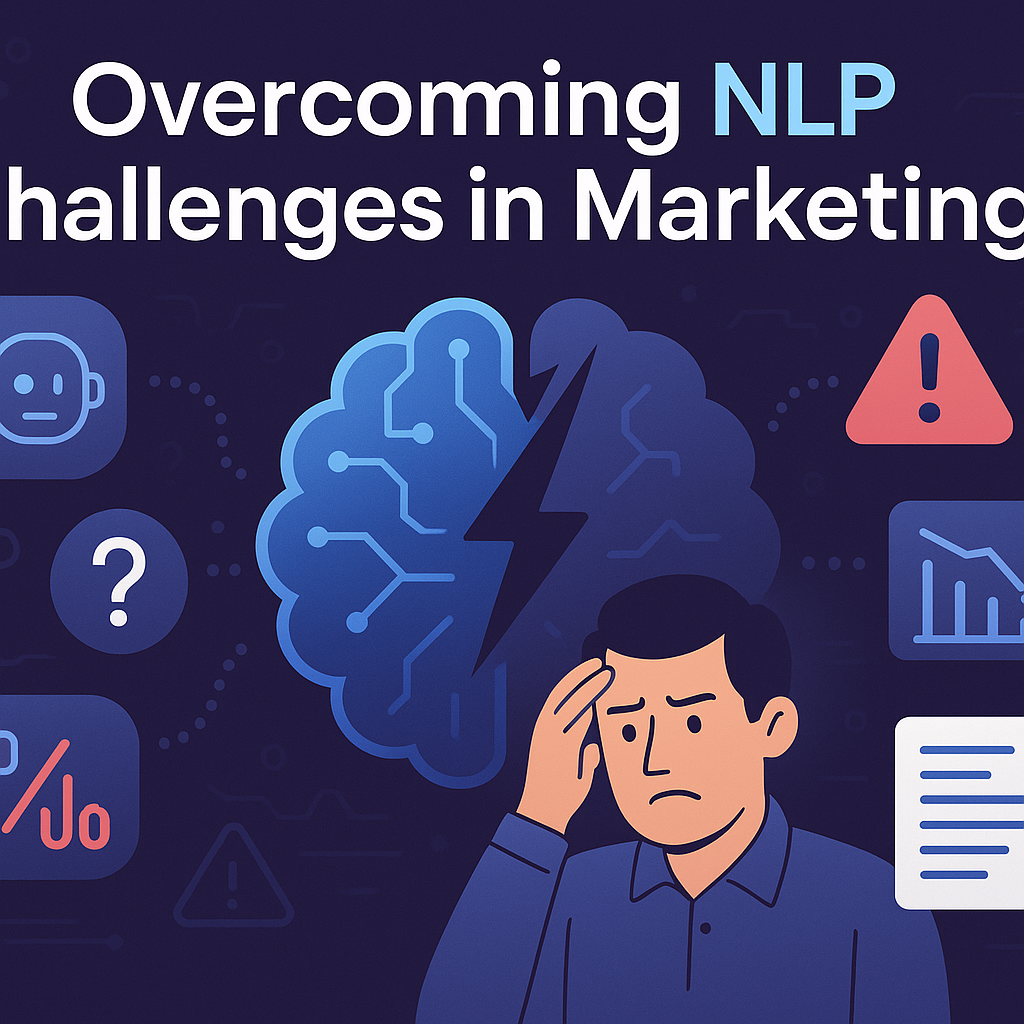Introduction to Text Mining in Marketing
Text mining, also known as text data mining, refers to the process of extracting meaningful information from text. It is used to analyze large datasets of text to uncover trends, patterns, and insights, especially in marketing. One of the primary techniques is sentiment analysis, which helps companies understand consumer emotions and opinions.
In practical terms, text mining allows businesses to process customer reviews, feedback, and social media data to make informed decisions. Sentiment analysis uses algorithms to determine whether a given text is positive, negative, or neutral.
Formula for sentiment score:
\\[ Sentiment\:Score = \\frac{Positive\:Words - Negative\:Words}{Total\:Words} \\]
For practical applications, check out our post on Voice Assistant Integration for eCommerce to see how sentiment analysis works in customer service chatbots.
Key Techniques in Text Mining
Text mining involves several techniques that can be applied to marketing data:
- Natural Language Processing (NLP): Techniques like tokenization and stemming break down sentences into smaller parts for better analysis.
- Clustering: Grouping similar content together helps in identifying product categories or customer segments.
- Classification: Text data is categorized into predefined classes, such as positive or negative sentiment, for targeted marketing campaigns.
Example: By classifying social media posts into different categories (e.g., complaints, suggestions, compliments), brands can prioritize customer service efforts.
In this article, we dive deeper into how NLP and machine learning can improve marketing strategies. For a more detailed exploration, read our post on Sentiment Analysis in Marketing.
Practical Example: Analyzing Customer Feedback
Let’s look at a practical example. Consider a marketing team analyzing thousands of customer reviews for a product launch. By applying text mining, they can extract feedback and categorize it into positive, neutral, and negative segments.
Formula for text classification:
\\[ P(y|X) = \\frac{P(X|y) \cdot P(y)}{P(X)} \\]
This formula represents the Bayesian classification approach, which is used to predict the probability of a review belonging to a specific sentiment category.
In the real world, businesses use these techniques to optimize product offerings and improve customer satisfaction. For more practical guidance on sentiment analysis, check out our Sentiment Analysis in Marketing blog post.
Tools and Technologies Used in Text Mining
Various tools and technologies facilitate text mining in marketing. Popular tools include:
- Python Libraries: Libraries like Scikit-learn and Pandas are widely used for data analysis and modeling.
- Text Mining APIs: Tools such as Text Analytics API can analyze content for sentiment, key phrases, and named entities.
Example: Using Python and Scikit-learn, marketers can build custom models for content classification and sentiment analysis. To understand how these libraries work in a business setting, check our post on Understanding Python for Marketing Analytics.
Real-World Applications in Marketing
Text mining in marketing is increasingly being used in various applications, such as:
- Customer Feedback Analysis: Brands analyze reviews and feedback to identify areas for product improvement.
- Competitive Analysis: Text mining is used to analyze competitor reviews and marketing strategies to gain a competitive edge.
- Brand Monitoring: Monitoring social media and online mentions to track brand reputation and customer satisfaction.
Real-World Example: Socialbakers uses text mining to help brands monitor social media mentions and sentiment to improve engagement and reputation management.
For a deeper dive into competitive analysis, read our post on Competitive Analysis Using NLP Tools.
Challenges and Limitations of Text Mining
Despite its powerful capabilities, text mining does have challenges. Ambiguity, sarcasm, and context-dependency in language make text mining tasks challenging. For example, a review may contain sarcasm, which could be misinterpreted by a sentiment analysis algorithm.
Formula for addressing ambiguity in NLP using the cosine similarity between words:
\\[ \\cos(\\theta) = \\frac{A \\cdot B}{\\|A\\|\\|B\\|} \\]
To mitigate these challenges, businesses can use advanced NLP techniques like BERT for Text Classification to better handle ambiguous texts.
Conclusion and Practical Steps for Marketers
Text mining is a transformative tool in marketing. By applying the right techniques, businesses can uncover valuable insights from customer data, improve marketing strategies, and enhance customer experiences.
Next Steps: Start applying text mining to your business by learning the tools and techniques discussed here. Dive deeper into NLP for Marketing or our AI Certification for Marketing Experts.








